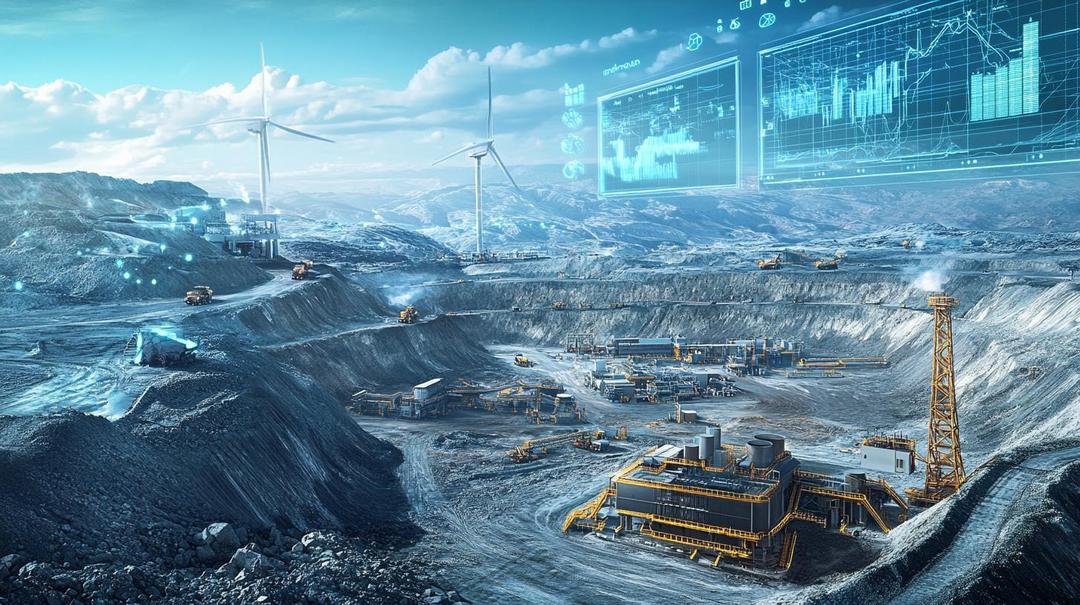From the magnetic motors in electric vehicles to the precision-guided systems in defense tech, rare earths are turning into the lifeblood of 21st-century innovation.
In today’s uncertain economic landscape, investors are looking deeper into commodities for diversification. Demand is booming, supply chains are volatile, and governments are scrambling to navigate the complex geopolitical landscape and price fluctuations. So, where does that leave investors?
We’ll go through market trends, financial forecasts, top-performing assets, and the very real risks associated with this high-stakes sector.
Let’s dig in.
What's Inside
Is Rare Earth Investment a Strategic Opportunity or a Risky Bet?
Rare earth elements have rapidly transformed from obscure industrial materials to critical components driving modern technology. These 17 unique metallic elements play a crucial role in everything from smartphones and electric vehicles to advanced military equipment and renewable energy systems.
The investment landscape for rare earth elements has dramatically shifted in recent years. While historically viewed as a niche market, these strategic minerals are now attracting serious attention from investors, governments, and technology companies worldwide. The growing demand for clean energy technologies and advanced electronics has fundamentally changed how we view these once-overlooked resources.
Understanding Market Dynamics
Global economic pressures like inflation and increasing demand for critical minerals have created a complex investment environment. Supply chains are increasingly fragile, with geopolitical tensions and concentrated production in a few countries adding layers of uncertainty. Investors must carefully weigh the potential rewards against significant market volatility.
Global Demand Trends and Future Forecasts
The renewable energy sector is driving unprecedented growth in rare earth element demand. Electric vehicle manufacturers, wind turbine producers, and advanced technology companies are competing for limited supplies. Projections from the International Energy Agency suggest dramatic increases in consumption through 2040, with some estimates showing demand potentially tripling in the next decade.
Sector-Specific Consumption Patterns
Different industries have unique rare earth requirements. The electric vehicle market needs specific elements for high-performance batteries, while aerospace and defense sectors require specialized magnetic materials. This diversified demand creates multiple investment entry points and potential growth opportunities.
Rare Earth Supply Chains: A Fragile Web of Global Dependencies
China currently dominates global rare earth production, controlling between 70-90% of the world’s supply. This concentration creates significant geopolitical and economic risks for international markets. Recent export restrictions and trade tensions have highlighted the vulnerability of current supply chains.
Emerging Production Alternatives
Countries like Australia, the United States, and Canada are investing heavily in developing alternative rare earth production capabilities. These efforts aim to reduce dependence on Chinese supplies and create more resilient global supply networks.
Investment Vehicles: Best Rare Earth Stocks, ETFs, and Alternatives
Investors have multiple options for gaining exposure to rare earth markets. Established mining companies like MP Materials and Lynas Rare Earths offer direct investment opportunities. Specialized exchange-traded funds (ETFs) provide a more diversified approach with lower individual stock risks.
Risk and Reward Profiles
Venture-stage producers offer high-risk, high-reward potential, while established companies provide more stable but potentially lower-return investments. The key is understanding individual risk tolerance and investment goals.
Price Performance and Volatility: What History Reveals
Rare earth element prices have historically been extremely volatile. Significant price spikes occurred in 2010-2012, demonstrating the market’s potential for rapid value changes. Investors must carefully analyze historical trends and understand the factors driving price fluctuations.
Geopolitical and Regulatory Forces Reshaping the Market
Legislative efforts in the United States and European Union are creating new frameworks for critical mineral development. Initiatives like the Inflation Reduction Act provide incentives for domestic production and aim to reduce international supply dependencies.
Policy Impact on Investment
Government regulations can dramatically affect rare earth element markets. Environmental restrictions, trade policies, and strategic mineral initiatives all play crucial roles in shaping investment opportunities.
Risk Assessment and ROI Scenarios
Potential investors should conduct thorough risk assessments considering multiple factors:
- Regulatory environment
- Environmental and social governance (ESG) considerations
- Technical challenges in extraction and processing
- Geopolitical stability of production regions
Different investment profiles suit different risk tolerances. Institutional investors might approach rare earth investments differently compared to individual investors seeking portfolio diversification. As always, please consult with your financial advisor if you’re looking to
Conclusion
From data-backed forecasts to ROI assessments and geopolitical nuances, this analysis should help you weigh your many options when it comes to rare earth investing. For those willing to navigate the complexity, the returns—both financial and strategic—can be lucrative.
Continue to monitor supply-chain changes, policy developments, and business trends.
FAQs
What are the most valuable rare earth elements for investors?
The most critical REEs include neodymium, praseodymium, dysprosium, and terbium—used in EV motors, wind turbines, and defense systems. These typically command higher prices and drive investor interest.
How can I invest in rare earth elements?
You can invest via publicly traded mining stocks (like MP Materials), specialized ETFs (like REMX), or indirectly through companies involved in green technology that depend on REEs. However, futures markets for rare earths are limited.
Are rare earth investments ESG-compliant?
It depends. Some REE mines have improved ESG scores thanks to better environmental practices, but many operations—especially in developing regions—may still struggle with pollution, labor, or land use issues. Review fund or company ESG disclosures carefully.
Is China reducing exports of rare earth elements in 2025?
China has introduced periodic export controls tied to national security and technology priorities. As of 2025, some tightening is in place, particularly on tech-critical elements, but full bans are rare.
What risks should investors be most aware of?
Key risks include geopolitical tensions, supply disruptions, project delays, environmental permit hurdles, and sudden price collapses due to overcapacity or demand dips. Diversification and due diligence are essential.


Dustin
Driven by a fascination with rare earth elements and their role in powering modern tech and engineering marvels. A true car and tech enthusiast, he loves exploring how these hidden heroes fuel our most exciting innovations.
You Might Also Like…